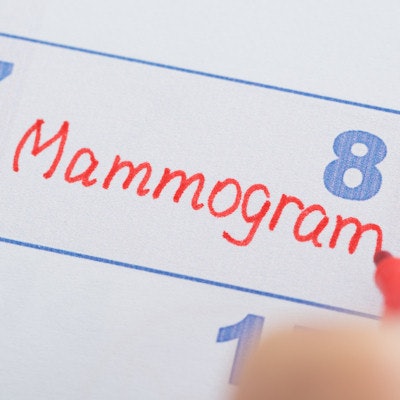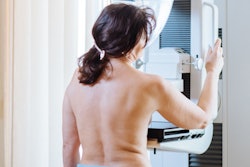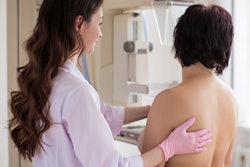
Allowing women to self-compress their breast tissue during mammography exams improves their experience while matching the image quality obtained with technologist-performed compression, according to a study published August 23 in the Journal of Breast Imaging.
The results suggest that allowing women to control their breast compression may be a relatively simple way to increase their adherence to screening mammography, wrote a team led by Dr. Brian Dontchos of Massachusetts General Hospital.
"Ongoing efforts seek to decrease breast cancer mortality by identifying and alleviating deterrents to screening mammography," the group wrote. "While deterrents are often multifactorial, one important deterrent to screening is discomfort and anxiety during the mammogram itself."
When women compress breast tissue themselves, their experience of the exam improves and image quality remains the same as when the compression is done by the technologist, previous studies have found. Dontchos and colleagues sought to further evaluate this phenomenon, conducting a study that included 685 women who were screened between February and July 2018 and offered use of a patient-assisted compression device.
The researchers surveyed the women after the exam and compared image quality, compression thickness, compression force, and average glandular dose between those who opted to use the handheld compression device and those who chose technologist-controlled compression. For women who chose to the use the handheld device, Dontchos' group also compared image quality between the self-compression exam and their most recent technologist-controlled mammogram.
Among the women screened, 148 completed surveys. Of the 148 women, 50 opted to use the patient-assisted compression device.
The majority of women (73%) who used the patient-assisted compression device preferred it to their prior mammogram without its use, and 83% rated their anxiety level during the exam as "none at all," the team found.
There were no significant differences in image quality, compression thickness, or average glandular dose between the women who used the patient-assisted compression device and those who did not. Dontchos and colleagues also found that women who compressed themselves used more force than those who underwent the exam with technologist compression (p = 0.012).
Allowing women to use a patient-assisted compression device could improve their mammography screening compliance, according to the authors.
"Our clinical evaluation demonstrated that patients who opted for [patient-assisted compression] had reduced anxiety during their screening mammography experience without compromise in exam quality," they wrote.
"The option of [patient-assisted compression] has the potential to lessen deterrents and improve patient adherence to screening mammography," the group concluded.




















